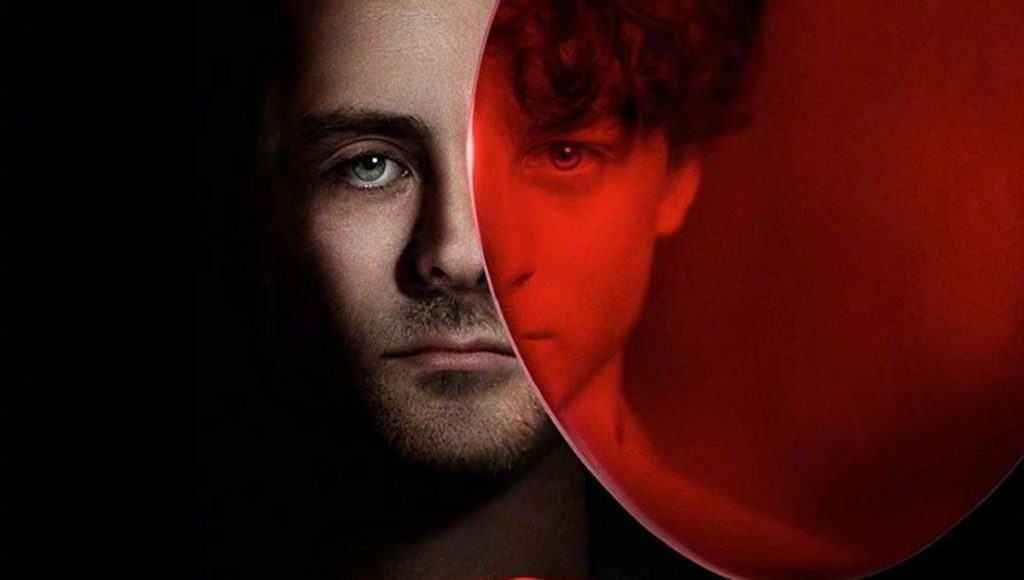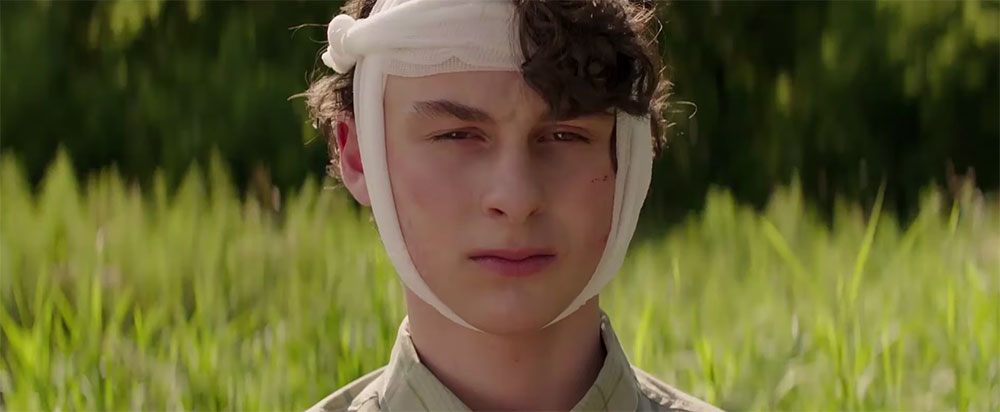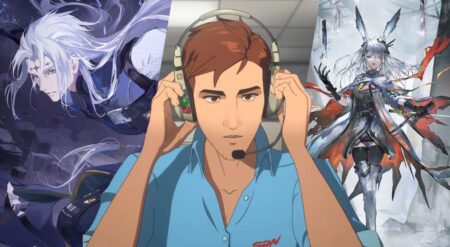
Trigger warning for discussions of suicide and suicidal ideation
I first encountered Stephen King’s IT in the fall of 2007, one of the roughest falls of my life. I was struggling with loss and the specter of what years later would be diagnosed as bipolar II haunting my waking moments. One night that October, a handful of weeks before my grandfather would pass, I watched a weird miniseries about a clown played by Tim Curry. I remembered a spider at the end, but mostly I was haunted by the image of a man lying in a tub, wrists cut, having written the word Stephen King’s IT in his own blood.
I think that was the first time I was scared of becoming the Stanley Uris of my own story.
At some point in middle or high school, I tried to read Stephen King’s IT, but the murder of Adrian Mellon by a group of homophobic teens frightened me so badly that that was as far as I got. In college, I picked up the book again and made it about 300 pages in, though for some reason I believed that Eddie screaming “THIS IS BATTERY ACID, FUCKNUTS” occurred in those earlier pages. I dropped it when a college professor told me sternly I wouldn’t like the ending.
Then came the fall of 2017. Pennywise, Georgie, and red balloons were everywhere, and I went on a perfectly bland date to see Stephen King’s IT. I walked in with vague memories of spiders and Stan Uris and knowledge of some of the book’s more controversial elements, and walked out utterly obsessed with the story. I finished the book, rewatched the miniseries, and cried my eyes out at IT Chapter Two.
IT is a messy book, adapted into a cheesy miniseries and a pair of movies you either love or that you absolutely hate. It is sprawling and weird and, oddly enough, hits right where my trauma lives. It is a story that’s hard for me to talk rationally about, because it feels so highly personal in a way that I haven’t quite connected with a horror narrative before.
In the opening of the chapter “Six Phone Calls” in the original novel, we learn about Stanley Uris and his wife. They were happy. Then, when faced with the prospect of returning to Derry to fight It again, Stanley kills himself. While the film takes a problematic stance by re-framing it as Stan’s suicide as him heroically removing himself from the board (which has been examined thoroughly by other writers), the novel is different. In the novel, Stan is traumatized and suffering from PTSD after his first encounter with It, and he kills himself rather than face It again. This is the personification of one of my deepest fears. For me, the Pennywise I face is not an actual sewer dwelling clown, but the recurring monster of my mental illness. It crawls from the metaphorical sewer of my mind and makes me small, makes me sad, makes me want to die. I can deal with the passing suicidal ideation that comes with being alive, but there are episodes, as I call them, where death seems so much more preferable to life.
Of course, these pass. The monster slinks away, leaving me to pick up the pieces from the latest mess and wonder if it wouldn’t be easier to die than to keep on living and waiting for my personal demon to wake up from its slumber to haunt me again.
In tenth grade, I tried to kill myself. I did not succeed. I think of that day a lot.
I’ve been thinking a lot about Stan too.
All horror involves death and trauma, in some a way, but Stephen King’s IT is also very much a story about life. We learn so much about the Losers’s lives, both as children and as adults. King paints a vivid picture of who Bill, Beverly, Richie, Eddie, Ben, Mike, and Stan all are. King’s strength has always been his in characters, and Stephen King’s IT showcases that. We empathize with the children we meet because we see their lonely, painful adult lives early on; we feel for the adults because we come to love them when they’re a scrappy group of kids.
In the novel, the Losers forget about Derry once they leave, but in the film they remember. They have to carry the memories of their trauma with them for the rest of their lives, but carry on they do. The film ends on the promise that the surviving Losers will all find some sense of closure and peace. That their pain was not meaningless.

The part of the novel that breaks my heart the most is forgetting. There’s something to be said about being able to forget and move on, but the fact that the Losers can’t remember each other, and can’t remember Stan or Eddie, hurts bone deep. Mike’s final journal entry reads “I loved you guys, you know. I loved you so much,” That love endures, but the memories are gone, which means the good is gone with the bad.
The film changes that. The film lets them remember each other. Mike’s final “I love you” is delivered to Bill, who says “I love you” in return. They’ll remember the trauma of Derry for the rest of their lives but there’s a promise that they’ll be fine and live their lives as they always should have. The film doesn’t shy away from the sentimental towards the end, which I appreciated. I like knowing that the Losers find happiness somehow, even after suffering so much loss and pain. I like seeing Ben and Beverly get their happily ever after. I like seeing Bill and Mike process their own pain. I even like Richie getting a moment’s closure on the Kissing Bridge, though his future is vague.
I can’t forget my own trauma. I have to learn to live with it and move forward. Every time a story tells me that it’s possible to do both, to choose to live and to remember, it gives me a sense of hope and comfort that I can mimic those endings in my own life. If the Losers Club can move forward, so can I.
Life and death is key to horror. With IT, King wrote a story about trauma and death, but he also wrote a story about lives. About lives cut short and lives that will ultimately be lived. The film explores this more by giving an ending in which the characters will lead lives they remember. All the good and all the bad. They still live.
Right now, I want to live. For all the recurring episodes of depression, for the monsters in the sewers of my mind, I want to live desperately. Not just survive, but live. Horror is oftentimes about finding the courage to live despite the monsters in the world, and that is why so many have drawn courage from King’s works.
Stephen King’s IT tells me that death is present, but it also told me I could live as well. That I could keep fighting to live, that I could keep pushing forward. The monster at the end of my book might not win. I can keep living, even with the pain. Perhaps especially with the pain.
If you are struggling with a mental health issue in USA call the National Suicide Prevention Lifeline at 1-800-273-8255 . In Canada, visit suicideprevention.ca for more information on how to get help.







